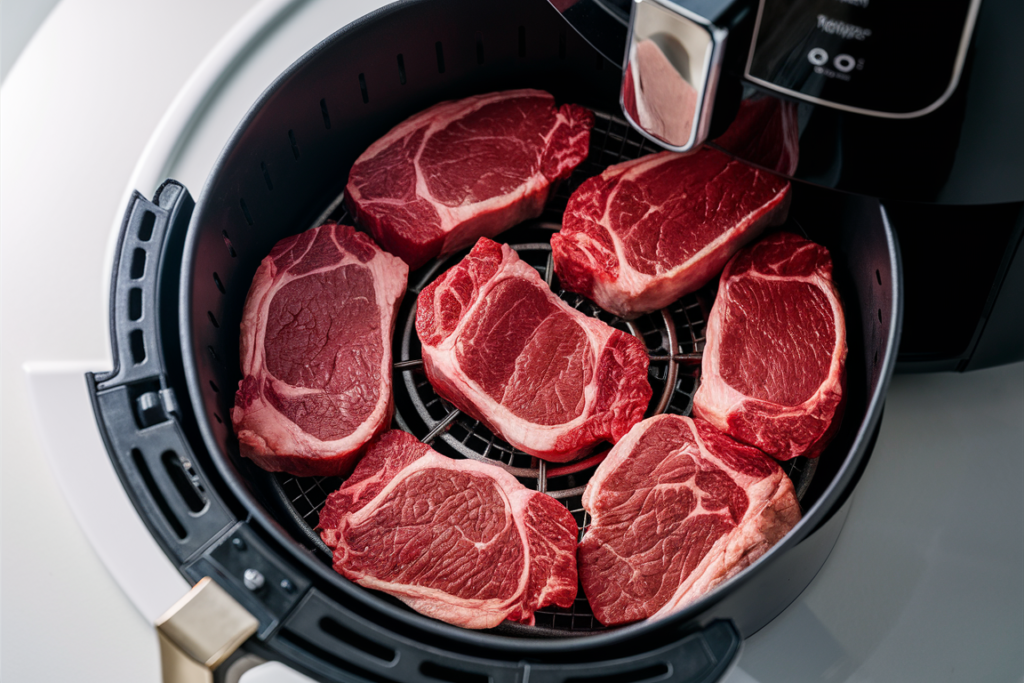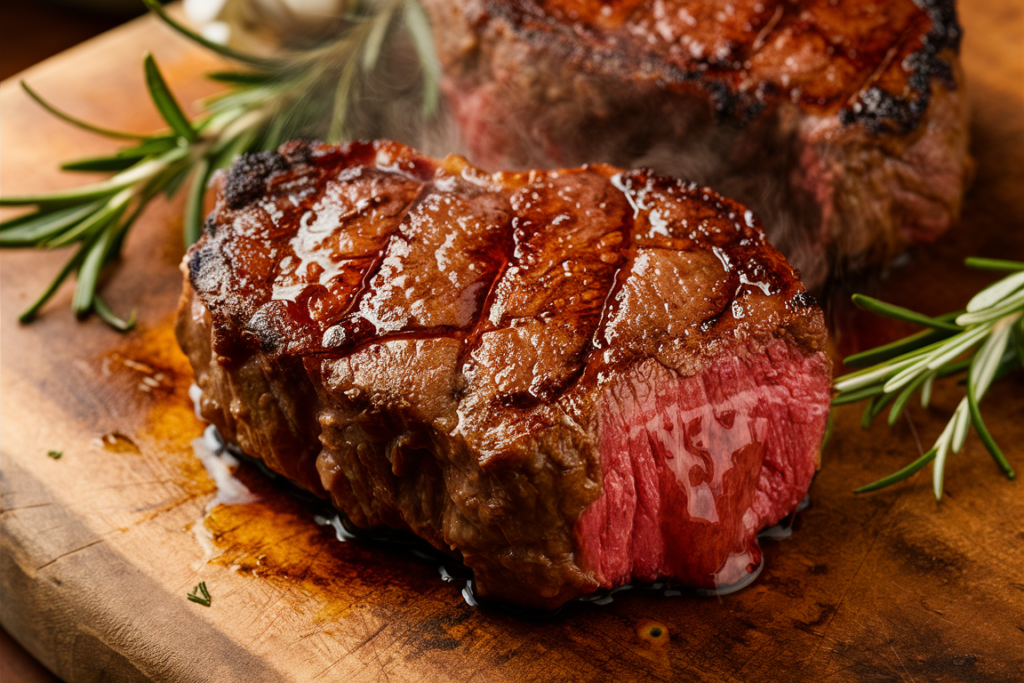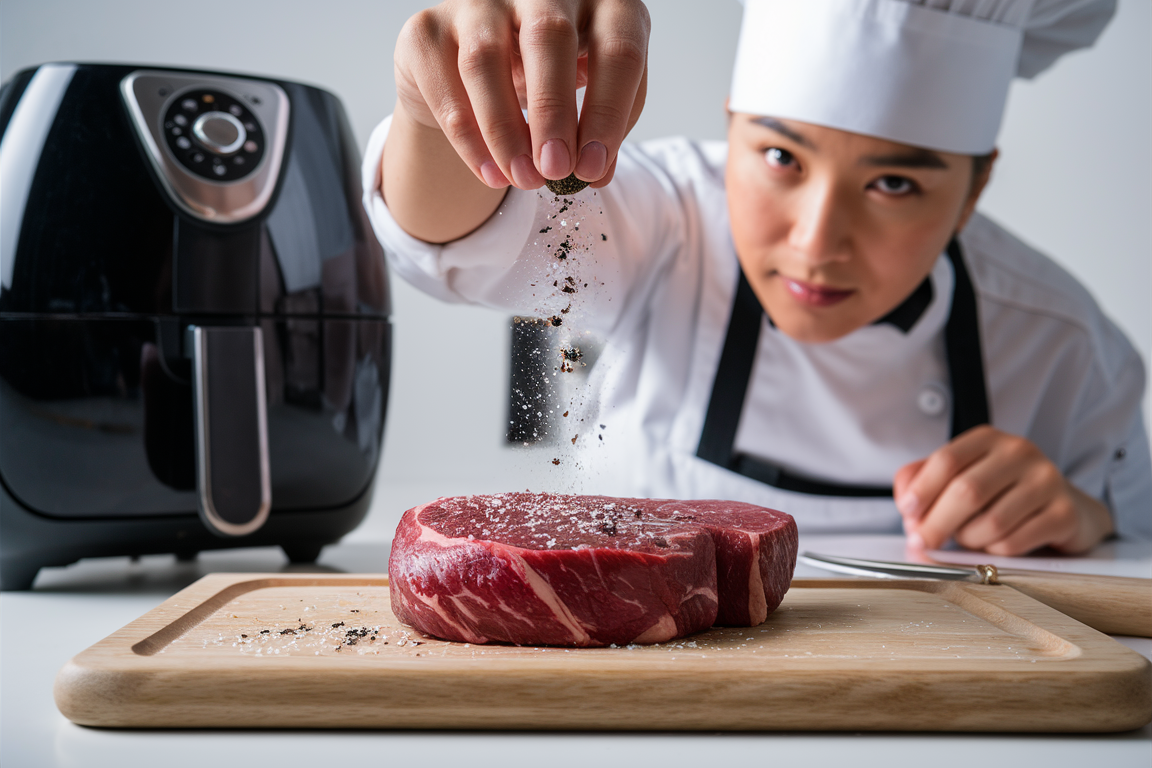How to Cook Raw Beef in an Air Fryer: A Step-by-Step Guide for Juicy Results
Air fryers have transformed modern kitchens with their ability to create crispy, golden dishes in record time. But when it comes to cooking raw beef, many home chefs wonder, “Is an air fryer the right tool for this job?” The answer is a resounding yes! With the proper preparation, seasoning, and cooking techniques, you can achieve tender, flavorful beef every time. This guide walks you through everything, from selecting the best cut of beef to troubleshooting common issues. Let’s dive into the sizzle!
Part 1: Understanding Air Fryer Technology
How Air Fryers Work and Why They’re Perfect for Beef
Air fryers use rapid hot air circulation to cook food evenly while creating a crispy exterior. This method closely mimics the results of frying but with far less oil. Essentially, the beef is cooked by convection heat, which ensures it remains juicy inside while achieving a delightful sear on the outside.
Because of this technology, air fryers are ideal for cooking a variety of beef cuts, from tender steaks to hearty roasts. Not only do they cook faster than traditional ovens, but they also lock in flavor, which is key when working with raw beef.
Key Benefits of Cooking Beef in an Air Fryer
Cooking beef in an air fryer comes with a host of advantages. First and foremost, it’s a healthier method. Since air fryers use only a fraction of the oil needed for pan-frying, your dishes retain less fat while still delivering a satisfying texture. Additionally, the shorter cooking time preserves nutrients and flavor.
Let’s not forget the convenience factor: air fryers eliminate the need for preheating large ovens, and cleaning up afterward is a breeze. Whether you’re preparing juicy steaks or experimenting with creative recipes, this gadget makes life in the kitchen simpler and tastier.
Part 2: Selecting the Right Cut of Beef
Recommended Beef Cuts for Air Frying
Choosing the right cut of beef is crucial for success when using an air fryer. While most cuts can be cooked this way, some perform far better than others due to their fat content and texture. Cuts like sirloin, ribeye, and tenderloin are prime candidates for air frying because they cook evenly and remain juicy.
Lean cuts like top round or eye of round can work too, but they may require extra care—such as marinating—to prevent them from drying out. On the other hand, excessively fatty cuts may lead to smoke buildup during cooking, so they’re best avoided. For recipes that involve thinly sliced beef, flank steak and skirt steak are also excellent options.

Factors to Consider When Choosing Beef for Air Frying
When selecting beef for your air fryer, keep these key points in mind:
- Thickness Matters: Aim for steaks that are about 1–1.5 inches thick to ensure they cook evenly without overcooking the exterior.
- Fat Distribution: Marbling is important for flavor but don’t go overboard; too much fat can drip into the fryer and cause smoke.
- Freshness: Fresh cuts yield better flavor and texture compared to frozen beef that hasn’t been thawed properly.
Preparing Beef Cuts for Air Frying
Before you toss the beef into the fryer, a little prep work is essential. Start by trimming any excess fat to reduce the risk of smoking or uneven cooking. Use a sharp knife and ensure the cut maintains its shape for uniform results.
Once trimmed, pat the beef dry with paper towels. This simple step ensures that the seasoning adheres better and creates a golden-brown crust when cooked. For tougher cuts like flank steak, consider using a tenderizing mallet or marinating for at least 30 minutes to an hour before cooking.
Part 3: Seasoning and Marinating Techniques
Basic Seasoning for Beef
Seasoning is where the magic begins! To achieve that bold, savory flavor, start with a classic mix of salt, black pepper, garlic powder, and onion powder. These staples enhance the natural taste of beef without overpowering it.
For an extra kick, add a pinch of smoked paprika or chili powder. Be generous but not excessive—seasoning should coat the beef evenly without forming clumps. If you’re unsure, lightly rub the seasoning mix onto the surface, ensuring it sticks well to the meat.
Marinating for Enhanced Flavor
Marinating not only elevates the flavor of your beef but also tenderizes tougher cuts. A great marinade combines three key components:
- Oil: Olive oil or avocado oil helps the marinade adhere to the beef and adds moisture during cooking.
- Acid: Ingredients like lemon juice, vinegar, or yogurt break down the meat fibers, making the beef tender and flavorful.
- Herbs and Spices: Fresh rosemary, thyme, crushed garlic, or even soy sauce can add depth to the flavor profile.
Here’s a simple marinade recipe:
- 2 tablespoons olive oil
- 1 tablespoon soy sauce
- 1 teaspoon garlic powder
- ½ teaspoon black pepper
- 1 teaspoon fresh rosemary (chopped)
Combine all ingredients and let your beef sit in the mixture for at least 30 minutes—or up to 24 hours for more intense flavor. Use a resealable bag or an airtight container to ensure the marinade evenly coats every inch of the beef.
Dry Rub vs. Marinade: Which Is Better?
It depends on your goals. A dry rub is quick, mess-free, and perfect for enhancing the crust during air frying. On the other hand, marinades are better for leaner cuts or when you want the flavor to penetrate deeper. Why not try both and decide which works best for you?
Part 4: Preheating and Preparing the Air Fryer
Importance of Preheating the Air Fryer
Preheating your air fryer is a game-changer. Much like an oven, an air fryer performs better when it reaches the desired temperature before you start cooking. Preheating ensures the beef cooks evenly and achieves that perfect golden sear on the outside while staying juicy on the inside.
Set your air fryer to 400°F (200°C) and allow it to preheat for 3–5 minutes. Most modern air fryers have a preheat function, making this step hassle-free. If your air fryer lacks this feature, just let it run empty at the desired temperature for the same duration.
Arranging Beef in the Air Fryer Basket
How you place your beef in the fryer basket can make or break your dish. Air fryers rely on circulation, so overcrowding the basket can block airflow and lead to uneven cooking. Always:
- Leave at least an inch of space between pieces of beef.
- Avoid stacking the meat, as it prevents the air from reaching all sides.
For larger cuts, consider using a rack if your fryer comes with one. This allows air to flow beneath the meat, ensuring an even cook throughout.
Using Oil Spray to Prevent Sticking
Even though air fryers are touted as oil-free, a light spray of oil goes a long way in preventing sticking and improving the crust on your beef. Use a neutral, high-smoke-point oil like canola or avocado oil, and apply it evenly across the basket or directly on the beef.
Quick Safety Tip
Never use aerosol cooking sprays in your air fryer! These can damage the non-stick coating over time. Opt for a refillable oil mister or a silicone brush instead.
Part 6: Ensuring Food Safety
Safe Internal Temperatures for Beef
When cooking raw beef in an air fryer, food safety is non-negotiable. The USDA recommends that all beef reach a minimum internal temperature of 145°F (63°C) with a three-minute resting period for safe consumption. This ensures harmful bacteria are eliminated without compromising the flavor and texture of your beef.
Use a reliable meat thermometer to check the internal temperature. For larger cuts, test the thickest part to confirm doneness, as thinner edges tend to cook faster.
Avoiding Cross-Contamination
Cross-contamination is one of the biggest risks when handling raw beef. To avoid it:
- Use separate cutting boards and utensils for raw beef and other ingredients.
- Thoroughly wash your hands, knives, and surfaces with warm soapy water after handling raw meat.
- Keep raw beef away from ready-to-eat foods like salads or bread.
Simple habits like these go a long way in keeping your kitchen safe and your family healthy.
Proper Storage and Thawing Techniques
If your beef is frozen, thaw it safely to avoid bacterial growth. The best method is to place it in the refrigerator overnight. For quicker thawing, use a sealed plastic bag and submerge it in cold water, changing the water every 30 minutes. Never leave raw beef out on the counter to thaw, as this can lead to rapid bacterial growth.
Signs of Spoiled Beef
Cooking beef that has gone bad can pose serious health risks. Always check for these signs before cooking:
- Discoloration: Fresh beef is bright red or slightly brown. If it turns grayish-green, it’s likely spoiled.
- Odor: A sour or ammonia-like smell is a strong indicator of spoilage.
- Texture: Slimy or sticky beef should be discarded immediately.
Part 7: Post-Cooking Practices
Resting the Beef for Maximum Juiciness
Resting cooked beef is the unsung hero of delicious results. When beef is removed from the heat, its juices redistribute evenly throughout the meat. Skipping this step can leave you with a plate of dry beef and a puddle of lost flavor.
Let your beef rest for 5–10 minutes on a cutting board or plate, loosely tented with aluminum foil. This ensures the juices remain in the meat while keeping it warm. For roasts or thicker cuts, extend the resting time to 15–20 minutes. Remember, patience pays off!
Slicing Beef the Right Way
How you slice your beef significantly affects the texture and eating experience. Always slice against the grain—this shortens the muscle fibers, resulting in tender, easy-to-chew pieces.
- For steaks, aim for slices about ¼-inch thick.
- For roasts, carve thinner slices, especially for leaner cuts like sirloin or top round.
Use a sharp knife to ensure clean cuts and avoid tearing the meat. If you’re uncertain about the grain direction, look for the lines running across the meat and slice perpendicular to them.
Serving Suggestions for Air-Fried Beef
Serve your perfectly cooked beef with sides that complement its rich flavors. Here are some ideas:
- Vegetables: Pair with air-fried asparagus, roasted Brussels sprouts, or a fresh garden salad.
- Carbs: Mashed potatoes, garlic bread, or a warm rice pilaf can balance the meal.
- Sauces: Add a dollop of herb butter, chimichurri, or a simple garlic aioli to enhance the flavor further.

Part 8: Frequently Asked Questions
Can You Cook Raw Beef in an Air Fryer?
Yes, absolutely! Cooking raw beef in an air fryer is not only safe but also efficient when you follow proper guidelines. Preheat the air fryer, season the beef, and cook it at the appropriate temperature to achieve juicy, flavorful results. Always use a meat thermometer to ensure the beef reaches a safe internal temperature.
How Long Does It Take to Cook Beef in an Air Fryer?
The cooking time depends on the cut, thickness, and doneness level. For instance:
- A medium-rare steak (1–1.5 inches thick) takes about 8–10 minutes at 400°F (200°C), flipping halfway.
- Thin beef strips may cook in as little as 4–6 minutes.
For larger cuts like roasts, plan on about 25–35 minutes per pound at 360°F (180°C).
Do You Need to Flip Beef in the Air Fryer?
Yes, flipping beef halfway through cooking ensures even browning and thorough cooking. Since air fryers rely on circulating hot air, turning the beef helps both sides cook evenly and develop a delicious crust.
What Temperature Should Beef Reach to Be Safe?
For safe consumption, the USDA recommends the following internal temperatures:
- Rare: 125°F (52°C)
- Medium-rare: 135°F (57°C)
- Medium: 145°F (63°C)
- Well-done: 160°F (71°C)
Always let the beef rest for 3 minutes after cooking to allow the temperature to stabilize.
Can You Marinate Beef Before Air Frying?
Absolutely! Marinating beef is a great way to enhance its flavor and tenderness. Use a mix of oil, acid (like lemon juice or vinegar), and herbs for the best results. Just ensure the beef is patted dry before air frying to avoid excess liquid in the fryer.
How Do You Prevent Beef from Drying Out in an Air Fryer?
Preventing dryness starts with selecting the right cut and seasoning it well. Additionally:
- Avoid overcooking by monitoring the internal temperature.
- Use oil spray to lock in moisture and improve the crust.
- Always let the beef rest after cooking to redistribute its juices.
Part 9: Conclusion
Cooking raw beef in an air fryer is a convenient, healthy, and downright delicious way to enjoy one of the most beloved proteins. By leveraging the power of this modern kitchen appliance, you can achieve restaurant-quality results right at home. From selecting the perfect beef cut to mastering seasoning, marinating, and cooking techniques, the process is straightforward and satisfying.
Remember to:
- Choose cuts like sirloin, ribeye, or tenderloin for the best results.
- Preheat the air fryer to ensure even cooking and a delightful sear.
- Use a meat thermometer to hit your target doneness with precision.
- Let the beef rest to lock in those flavorful juices.
With the tips and techniques shared in this guide, you’re well on your way to creating tender, juicy, and perfectly cooked beef every time. So, grab your air fryer, get creative with seasonings, and enjoy the ease and flavor of this versatile cooking method. The possibilities are endless!
Happy air frying! If you have more questions or tips to share, feel free to connect and inspire others with your culinary adventures.


